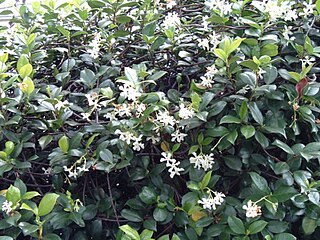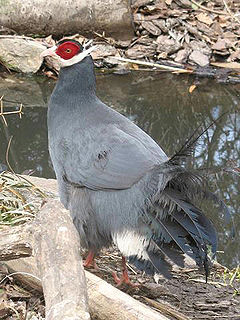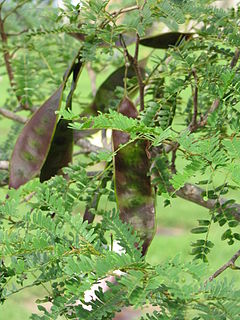
Convolvulaceae, known commonly as the bindweed or morning glory family, is a family of about 60 genera and more than 1,650 species of mostly herbaceous vines, but also trees, shrubs and herbs, and also including the sweet potato and a few other food tubers.

The double-crested cormorant is a member of the cormorant family of water birds. Its habitat is near rivers, lakes, and can also be found in beaches. And is widely distributed across North America, from the Aleutian Islands in Alaska down to Florida and Mexico. Measuring 70–90 cm (28–35 in) in length, it is an all-black bird which gains a small double crest of black and white feathers in breeding season. It has a bare patch of orange-yellow facial skin. Five subspecies are recognized. It mainly eats fish and hunts by swimming and diving. Its feathers, like those of all cormorants, are not waterproof and it must spend time drying them out after spending time in the water. Once threatened by the use of DDT, the numbers of this bird have increased markedly in recent years.

Nannopterum is a genus of cormorant comprising three species. They are found throughout the Americas, hence the common name American cormorants.

TrachelospermumStar Jasmine, Confederate Jasmine, is a genus of evergreen woody vines in the dogbane family Apocynaceae, first described as a genus in 1851. All species are native to southern and eastern Asia.

The blue eared pheasant is a large, up to 96 cm (38 in) long, dark blue-grey pheasant with velvet black crown, red facial feathers appearing as bare skin, yellow iris, long white ear coverts behind the eyes, and crimson legs. Its tail of 24 elongated bluish-grey feathers is curved, loose, and dark-tipped. Both sexes are similar with the male being slightly larger.

Piper auritum is an aromatic culinary herb in the pepper family Piperaceae, which grows in tropical Central America. Common names include hoja santa, yerba santa, hierba santa, Mexican pepperleaf, acuyo, tlanepa, anisillo, root beer plant, Vera Cruz pepper and sacred pepper.
Sepiadarium auritum is a species of cuttlefish native to the eastern Indian Ocean off northwestern Australia.
Anthurium auritum is a species of plant in the family Araceae. It is endemic to Ecuador. Its natural habitat is subtropical or tropical moist montane forests. It is threatened by habitat loss.
Pentastelma is a genus of liana in family Apocynaceae, first published as a genus in 1974. It contains only one known species, Pentastelma auritum, endemic to the Island of Hainan in China.

Lysiloma is a genus of flowering plants in the family Fabaceae.

Sacciolepis is a genus of plants in the grass family. Cupscale grass is a common name for plants in this genus.

Hymenachne is a genus of widespread wetlands plants that is in the grass family. They may be known commonly as marsh grasses. They are distributed in tropical and subtropical regions of Asia, the Americas, and the Pacific Islands. A species from the Americas, H. amplexicaulis, is well known in other parts of the world as an introduced and invasive species.

Lepadidae is a family of goose barnacles, erected by Charles Darwin in 1852. There are about 5 genera and more than 20 described species in Lepadidae.
Conchoderma is a genus of goose barnacles in the family Lepadidae.
iNaturalist is a social network of naturalists, citizen scientists, and biologists built on the concept of mapping and sharing observations of biodiversity across the globe. iNaturalist may be accessed via its website or from its mobile applications. As of June 2022, iNaturalist users had contributed approximately 115 million observations of plants, animals, fungi, and other organisms worldwide, and around 350,000 users were active in the previous 30 days.

Protenor is a genus of broad-headed bugs in the family Alydidae. There are at least three described species in Protenor.
Animal Ethics is a nonprofit organization formed to promote discussion and debate around issues in animal ethics and to provide information and resources for animal advocates. They also do outreach work in several countries on the issue of speciesism. Their aim is to create a world where moral consideration is extended to all sentient beings. The organization's website covers topics such as speciesism, sentience, veganism and wild animal suffering and has content translated into several languages.
Ichthydium is a genus of gastrotrichs belonging to the family Chaetonotidae.












